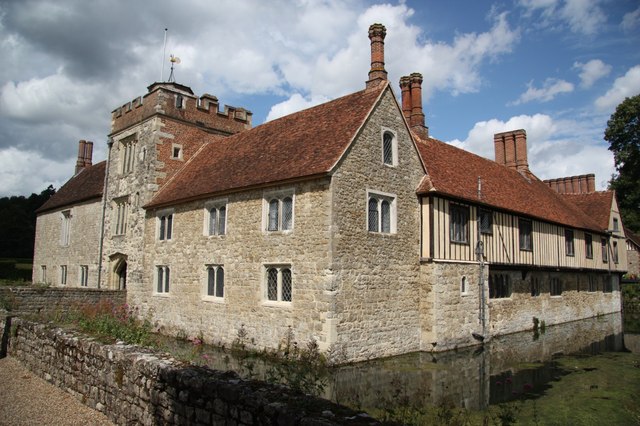What is a dead-house?

By Andy Dingley (Own work)
Many believe that hauntings revolve around the idea of ‘unfinished business’. Spirits are earthbound until they can fix the outstanding problem and move on.
But there are those who believe the dead remain on earth because they don’t realise they are dead. Maybe they remain to torment their murderers.
Even more, there is a belief that disturbing someone’s place of burial causes the spirit to return. This was memorably illustrated in Poltergeist (1982), in which a suburban house is plagued by poltergeist activity since the house was built on an old cemetery.
I first discovered the so-called dead-house in The Haunted: A Social History of Ghosts by Owen Davies (London: Palgrave, 2007). In the late 18th century, Britain’s most populous areas needed somewhere to store bodies before an inquest. This period saw mass urban migration after the Industrial Revolution. These bodies weren’t buried in the traditional way soon after death, so their ghosts remained earthbound until burial could take place.
According to Davies, bookseller and memoir writer James Lackington reported a haunting in a London hospital. A ward in the lower part of the building had been converted into a dead-house, “where a continual tapping on the windows was heard” (61). The nurses, who probably couldn’t account for such noises, assumed the tapping must be the work of an unquiet spirit since the dead-house was close by. The nurses refused to enter the haunted part of the building.
The dead-house was often located in or near a cemetery, as they housed bodies prior to burial. However others were the forerunner to the hospital morgue, or mortuary. I’ve looked online and the ‘evidence’ for haunted morgues or mortuaries seems anecdotal at best. I can’t help thinking that feelings of unease in a morgue have less to do with the presence of the dead and more to do with the low temperature and pre-conditioning by exposure to the horror end of the pop culture spectrum. Some of the ‘haunted mortuaries’ I’ve found are essentially tourist attractions!
The belief that disturbing a grave site might lead to a haunting is flawed. Most locations are bound to have had burials there at some point in the past, even if it was in Neolithic times. The concept that a dead-house might be haunted has more to do with the intrinsic revulsion provoked by corpses that Sigmund Freud discusses in his 1919 essay on ‘The Uncanny’. Essentially – it’s all in the mind…
What do you think? Let me know in the comments!







